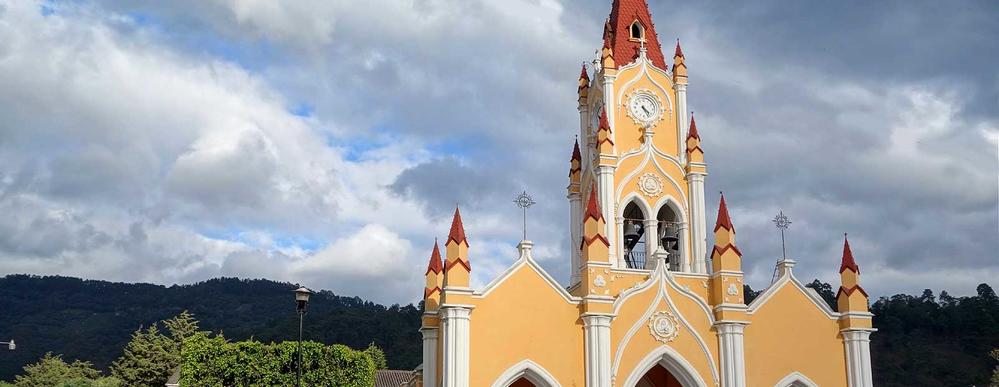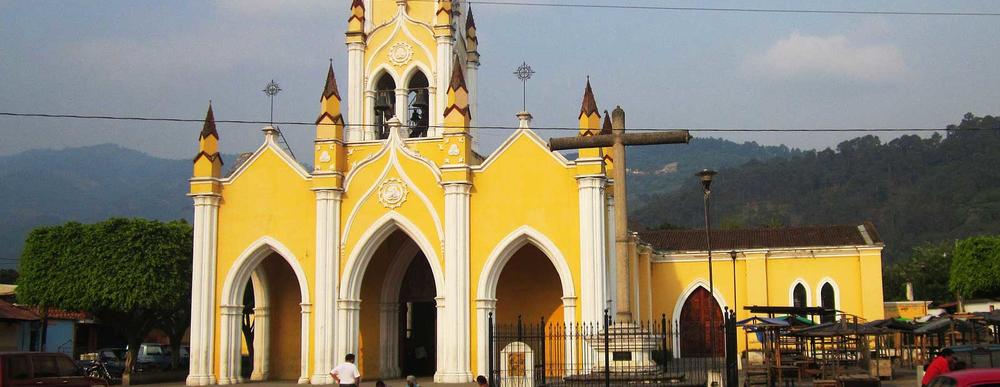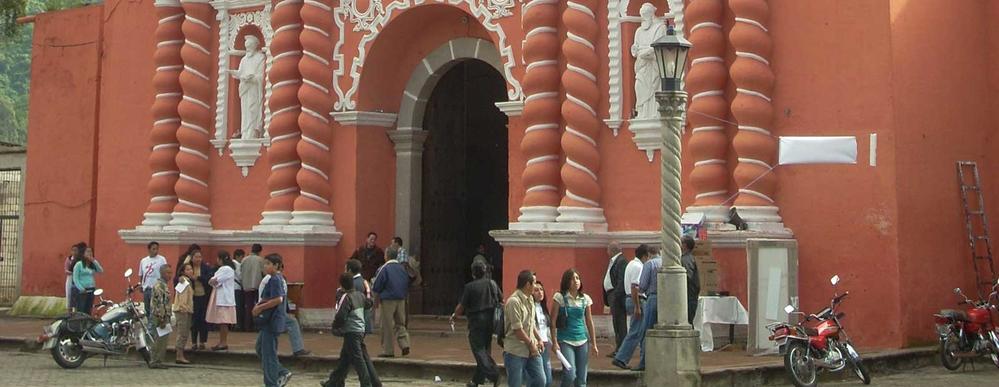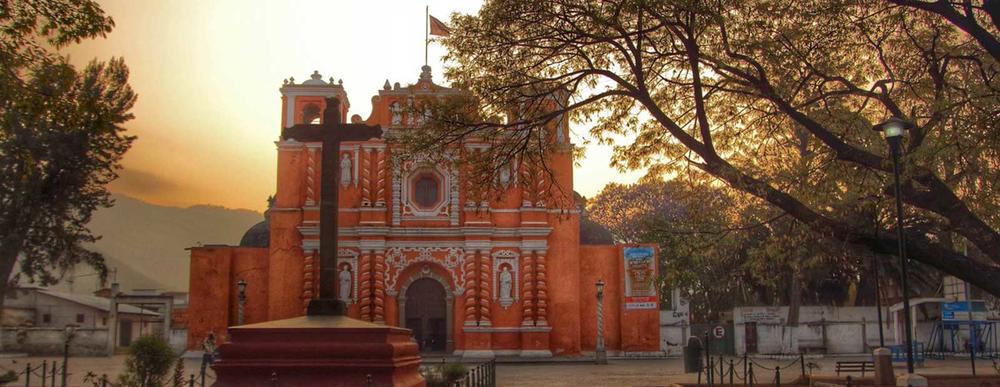Posted on Jan 28, 2019 |
Third post on villages around Antigua Guatemala, In these series of articles, we will talk about two each week. For this third article, we’ll include two towns, San Felipe de Jesus and the well know Jocotenango whose history influenced other villages around the colonial city.
VILLAGES NEAR ANTIGUA GUATEMALA Ed. #3
San Felipe de Jesus Village
This village is at Antigua Guatemala's border, just 2.5 kms from city's central park, this is 8 mins driving.
Like other villages around Antigua Guatemala, this village was founded a few centuries ago, the exact date is unknown, however, there are data that say it was founded in 1530. This town was built on the edges of the EL REJÓN valley, a little over two kilometers north of the colonial city of Antigua Guatemala.
It is known for its very beautiful modern neo-Gothic church, its design and architecture stands out from the rest of church buildings in Antigua Guatemala. This construction for this church began in 1820, and due to the increasing number of faithful who visited the church, the building was extended in 1870, this extension of the building was proposed by the presbyter Don Manuel Leal and included a new oratory. The building was rebuilt in recent times after being seriously damaged by the 1976 earthquake that shook the country.

The church is also famous because there is the image of "Señor Sepultado de las Animas (Lord Buried of the Animas)", formerly known as "Cristo de las Benditas Animas (Christ Jesus of the Blessed Animas)" a famous sculpture-image believed by the faithful to have miraculous powers. The sculpture shows the rigidity of a body by the posture of the cross.
The name for this village is in honor of the missionary of the Franciscan order, San Felipe de Jesus, born in Mexico in 1572, son of Spanish immigrants who settled in Mexico after the conquest. After his death in 1597, he was canonized to become the first Mexican saint born in the new world.
In its central park, there is a beautiful fountain built in the 17th century, to the north of the park is located the municipal building, to the east and west of the park, commercial establishments were established for local artisans. Its economy is based mainly on local and foreign tourism, as well as on the coffee farms of the area. Its inhabitants are especially dedicated to agriculture, cultivating mainly coffee, corn, beans, as well as other vegetables and fruits. They are also known for their craft activities in wood and clay. In its handicrafts market typical fabrics and other handicrafts of local and tourist trade are found.
In this village, the modern National Hospital "Pedro de Betancourt" is located, occupying a land of 6 blocks at the south-east side of the town and was inaugurated in 1991. This hospital was originally located in La Antigua Guatemala, but destroyed by the strong earthquake of 1976.
Jocotenango
From Antigua Guatemala Central Park, to Jocontenango Central Park, the distance is 3 kms, which is 10 mins driving distance.
Like the colonial city of Antigua Guatemala, Jocotenango is a village framed by the imposing guardians of volcanoes Agua, Fuego and Acatenango.It has an extension of 9 square kilometers, it is so close to Antigua Guatemala that it almost seems to be part of the colonial city.
The origin of its name comes from the indigenous word "xocotl yxocotlan / Xocolt-jocote", which means "place where jocotes abound", this was because the land was fertile due to its volcanic soil to cultivate this bittersweet fruit. Today, this whole area has large coffee crops, ornamental flower production and other important agricultural plants.

It is a large and very populated village, commercially very active and has great influence on the tourist and local activity of Antigua Guatemala. The settlers who were part of Jocotenango after its foundation belonged to the Maya Kaqchikel indigenous ethnic group, however, over time this identity has been almost completely lost. Currently the population of this village is 95% ladino (over 18 thousand inhabitants) (see the article on Guatemala ethnic groups), and has no typical-traditional costume unlike other villages near Antigua Guatemala.
Its patronal feast is celebrated on August 15th of each year in honor of the Blessed Virgin of the Assumption; religious, cultural, social and sporting events take place in Jocotenango in this important day, its folk dances and its traditional jaripeo activities are quite famous, this party is more and more popular every year because of the enthusiasm and dedication of the organizers and residents of Jocotenango since 1620.
Most of the inhabitants of Jocotenango are Catholic, something that can be seen in the many activities that take place in this village during Holy Week, when the Catholic fervor is reflected in the carpets that adorn the streets.
The economy of the village is autonomous in large percentage, for more than 95% of the employment for the villagers is generated by local commerce.
Latest Posts
-
Ten Beautiful Words in the Spanish Language
- Jul 13, 2024 -
Easter Week 2024 in Antigua Guatemala
- Feb 04, 2024 -
Demystifying the Use of CION, SION, and XION Suffixes in Spanish
- Oct 22, 2023



